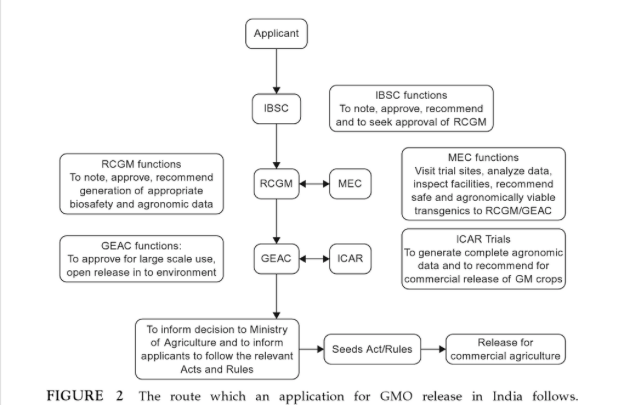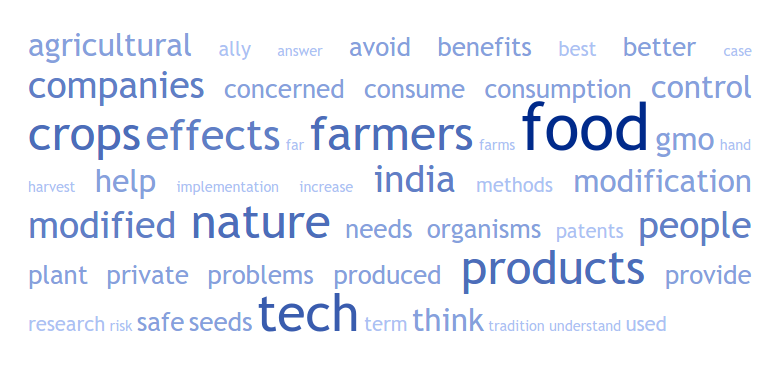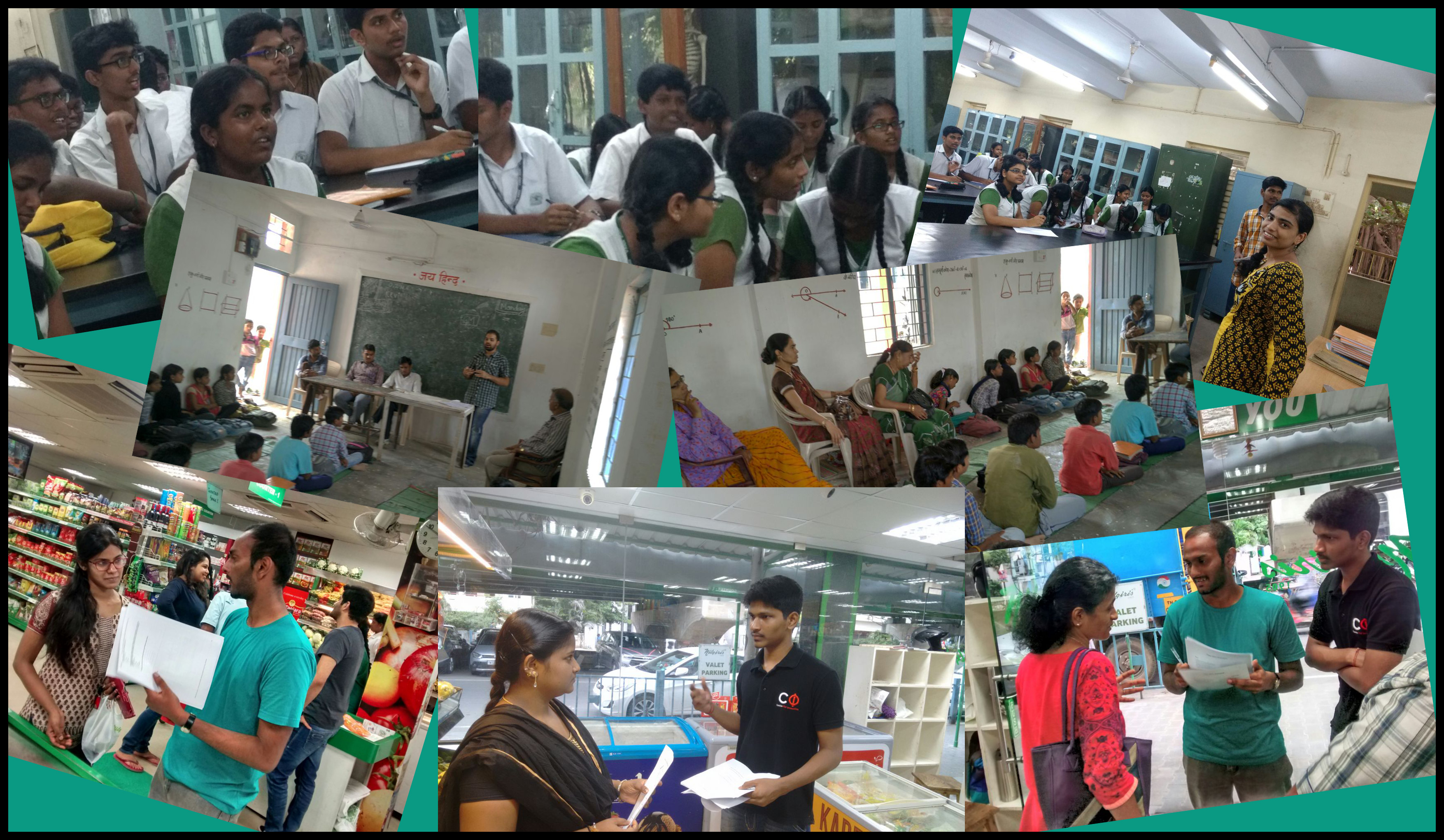GMO in India
Agriculture is demographically the broadest economic sector in India which accounts for approximately 13.7% GDP and 50% of the workforce (approx. 600 million). The conventional technology currently in use is not self-sufficient for the ever-growing population. Several pesticides and insecticides are used which deteriorates the environment. Owing to the genetically modified (GM) crops' high productivity, low pesticides and insecticides usage, drought resistance and high nutritional quality, we took the task of exploring more about the GM technology and creating awareness on both the fronts, pros and cons.
Currently in India, 93% of cotton grown is Bt cotton. There are several genetically modified crops including rice, maize, mustard etc. are under field trials, with a huge ongoing debate scrutinizing its bio-safety levels. For a new GM crop to be introduced, it has to go through many regulatory processes by the government.
Since most of the population is unaware about GM technology, we tried to understand the advantages and disadvantages of GM crops along with how it is tested for safety in India. This prompted us to investigate GMO related issues by reaching out to it's stakeholders, general public (consumers and farmers), NGOs and regulatory authorities. Our objectives were to make them answer the following questions:
1. What percent of general public have heard of GMO and are aware of it's economical, technical and political implications?
2. What is the perception of public regarding the consumption of GM foods?
3. What do people believe as better in GM patenting regime of the country?
4. What makes a person opt for GM food consumption? Is it better knowledge and understanding of GM?
Considering these, we designed our survey. We conducted our survey in colleges of four different states with the help of SVCE Chennai, IISc Banglore, IIT Delhi and IIT Kharagpur (total 330 responses). We surveyed undergraduates, post graduates and professors across various departments and later on categorized them into two groups- Biotechnology related and non-Biotechnology related departments. We also made sure that we have enough responses in each category. You can view the survey questionnaire here.
An application for approval of a GMO in India has to go through the following committees:
IBSC: Institutional Biosafety committee
RCGM: Review Committee on Genetic Manipulations
MEC: Monitoring cum Evaluation Committee
GEAC: Genetic Engineering Approval Committee
ICAR: Indian Council of Agricultural Research
Analysis
We believe that GM crops/foods would be a very important part of our life in the future, if not today. Genetic Modification technology would be developed to an extent that all of us would be satisfied with its technical, economical and political implications. In that regime, we believe that the answers to all of our questions would be 'YES'. Therefore, we have looked at the patterns, which give us 'YES' answers in our questionnaire. The percentage of people responding 'YES' have been color coded like: 0-40% red, 40-70% yellow, 70-100% green. In this way, we can also estimate that how close are we to go green! We found interesting results in accordance with our hypothesis. We had divided our participants into six groups: Undergraduates, Graduates and Professors, each from Biotech or non-Biotech. A comprehensive analysis of our results can be obtained here. Below is the tag cloud representation of the comments, which we received in our survey.
Educating school students
Vana Vani Matriculation school
To expand the synthetic biology community, we believed it’s necessary to create interest in the fundamental stage itself. We went to a school in our locality and interacted with our fellow student community in 12th grade. They all had their major as biology but still they were overwhelmed to know that they can engineer life!
We started with the very basic of DNA, as a source of information written in the language of cells which has only four letters and went to central dogma with proteins as meaning of the words created by those letters. Several analogies made by us like ‘RNA as a photocopy of a particular page in a book’ made them understand well about the concepts. After this we went on to restriction enzymes which cut at palindromic sequences.
We made a simple activity to make them understand a palindromic sequence. A set of letters were given (say ‘AGACTT’) and the teams were asked to come up with as many palindromic sequences as they can with those letters. Many teams came up with many answers but actually one found out that it is just a simple math! With this we made sure that they understood the basics of complementary base pairing and reverse complementary matching in palindromic sequences.
Atlast the students were told what synthetic biologists are capable of and were asked to come up with some fun applications. We found our future IGEMers as their answers really amused us like glowing roadside trees, toxin detection using fluorescence and many more!
Government school in Hamsapura
An awareness drive was conducted at the local Government school of Hasampura, a small village in the district Ujjain, Madhya Pradesh, India. Almost all the students of the school came from families with farming and agriculture background. The students were made aware of the importance of science in their life and how crucial it can be when GM crops are introduced at a large scale in the agricultural fields. Various parameters were discussed with them which included the quantity of GM seeds, amount of manure and fertiliser used, nutritional value, cost calculations, insecticides and pesticides usage etc, which were then compared with the conventional technology currently used. Various governmental policies regarding GM crops were also discussed. The students responded well and conveyed the message to their parents. In this way, we were able to spread awareness about the importance of GM crops and how can it revolutionize their lives.




